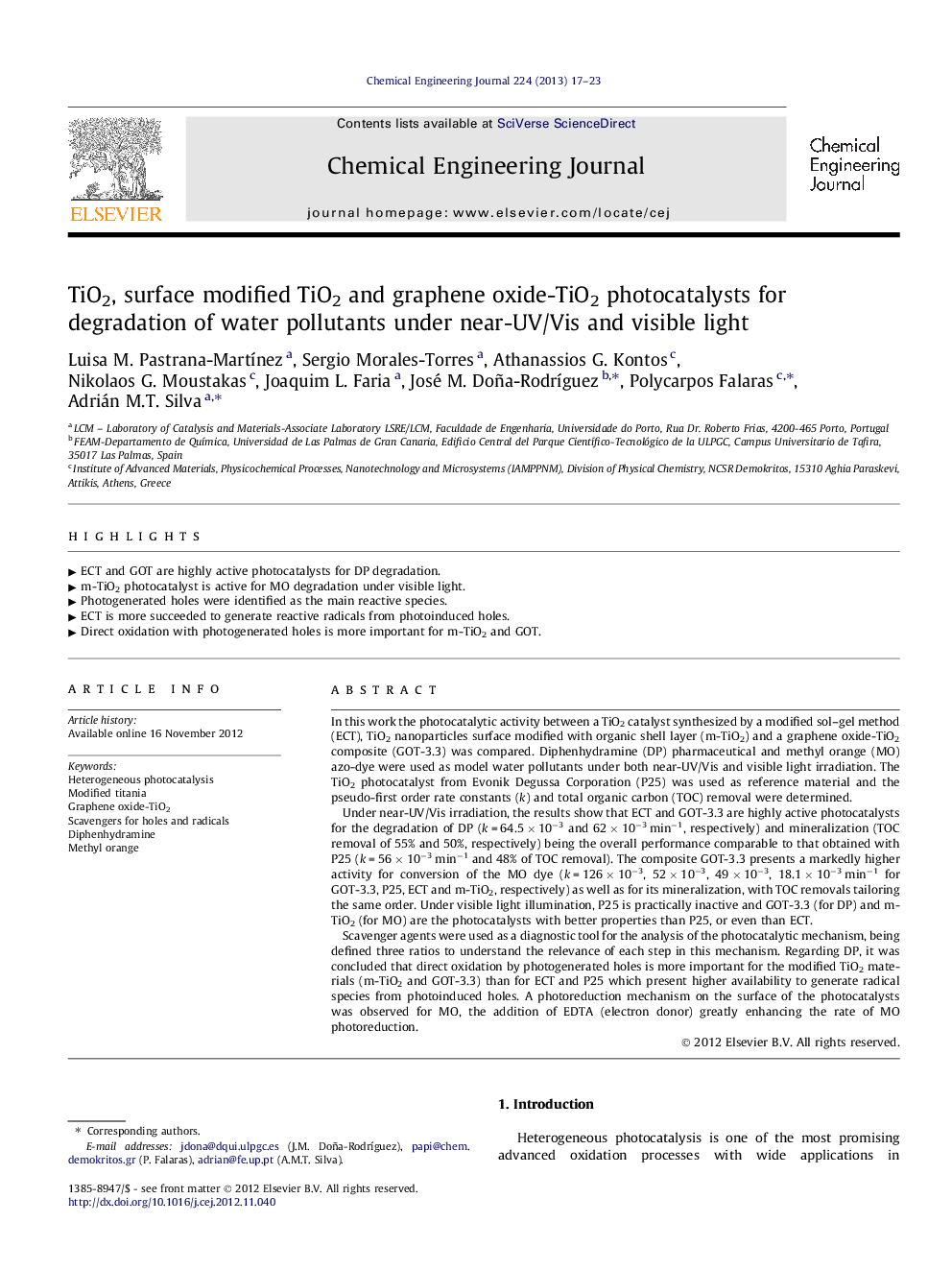| کد مقاله | کد نشریه | سال انتشار | مقاله انگلیسی | نسخه تمام متن |
|---|---|---|---|---|
| 148496 | 456417 | 2013 | 7 صفحه PDF | دانلود رایگان |

In this work the photocatalytic activity between a TiO2 catalyst synthesized by a modified sol–gel method (ECT), TiO2 nanoparticles surface modified with organic shell layer (m-TiO2) and a graphene oxide-TiO2 composite (GOT-3.3) was compared. Diphenhydramine (DP) pharmaceutical and methyl orange (MO) azo-dye were used as model water pollutants under both near-UV/Vis and visible light irradiation. The TiO2 photocatalyst from Evonik Degussa Corporation (P25) was used as reference material and the pseudo-first order rate constants (k) and total organic carbon (TOC) removal were determined.Under near-UV/Vis irradiation, the results show that ECT and GOT-3.3 are highly active photocatalysts for the degradation of DP (k = 64.5 × 10−3 and 62 × 10−3 min−1, respectively) and mineralization (TOC removal of 55% and 50%, respectively) being the overall performance comparable to that obtained with P25 (k = 56 × 10−3 min−1 and 48% of TOC removal). The composite GOT-3.3 presents a markedly higher activity for conversion of the MO dye (k = 126 × 10−3, 52 × 10−3, 49 × 10−3, 18.1 × 10−3 min−1 for GOT-3.3, P25, ECT and m-TiO2, respectively) as well as for its mineralization, with TOC removals tailoring the same order. Under visible light illumination, P25 is practically inactive and GOT-3.3 (for DP) and m-TiO2 (for MO) are the photocatalysts with better properties than P25, or even than ECT.Scavenger agents were used as a diagnostic tool for the analysis of the photocatalytic mechanism, being defined three ratios to understand the relevance of each step in this mechanism. Regarding DP, it was concluded that direct oxidation by photogenerated holes is more important for the modified TiO2 materials (m-TiO2 and GOT-3.3) than for ECT and P25 which present higher availability to generate radical species from photoinduced holes. A photoreduction mechanism on the surface of the photocatalysts was observed for MO, the addition of EDTA (electron donor) greatly enhancing the rate of MO photoreduction.
► ECT and GOT are highly active photocatalysts for DP degradation.
► m-TiO2 photocatalyst is active for MO degradation under visible light.
► Photogenerated holes were identified as the main reactive species.
► ECT is more succeeded to generate reactive radicals from photoinduced holes.
► Direct oxidation with photogenerated holes is more important for m-TiO2 and GOT.
Journal: Chemical Engineering Journal - Volume 224, 15 May 2013, Pages 17–23